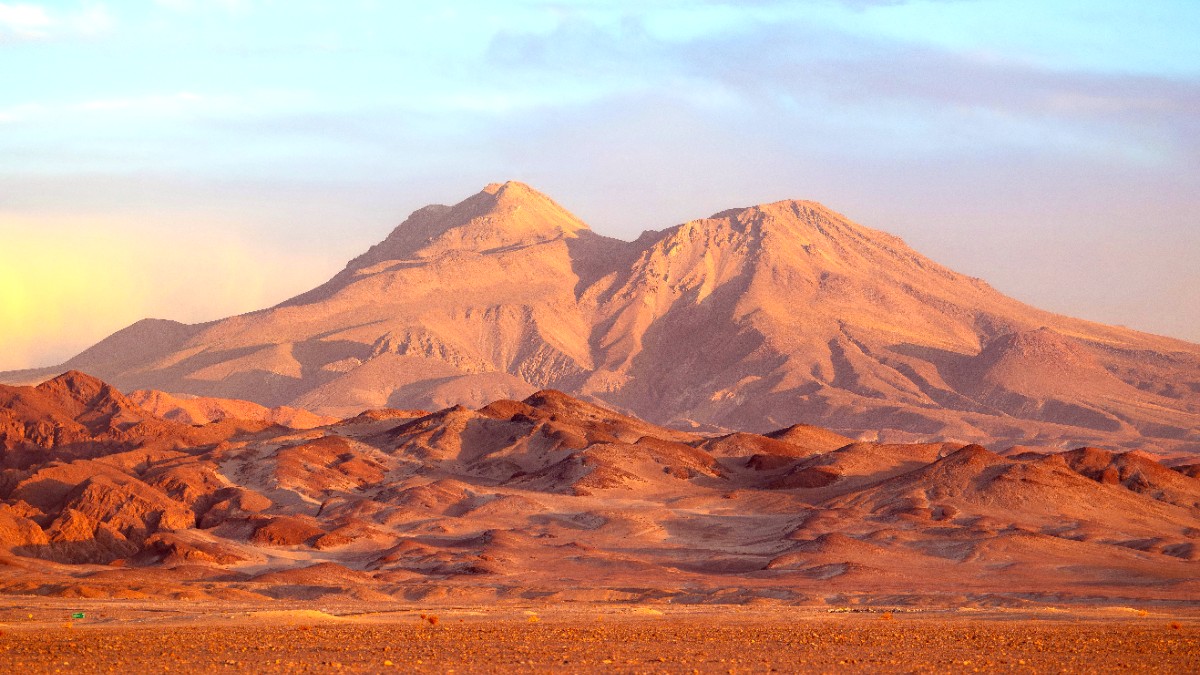
Northern Chile, Chile
The extreme desert environment means most attractions are outside town. Organized tours are generally the most convenient and safest option for exploring these sites. This is especially true for high-altitude locations where acclimatization is useful.
This section covers iconic landmarks, museums, historical sites, and natural attractions. It also shares information on some less-known spots.
Formal cultural centers or performance venues are limited. Inquire locally for any traditional music or dance events.
Lesser-known valley southwest of San Pedro with hillsides showing vivid mineral colors (red, green, blue, white). Requires dedicated tour or rental car; roads can be challenging.
Remote, high-altitude salt flat near the Argentine border. Known for vastness, "Monjes de la Pacana" rock formations, and wildlife. Requires a full-day, specialized 4x4 tour. A true wilderness experience at higher altitude.
Geological formation of reddish volcanic rocks contrasting with turquoise lagoons. High altitude near Salar de Aguas Calientes. Part of full-day high-altitude tours. Acclimatize carefully.
Combine a visit to this ancient fortress with a bike ride through the Catarpe Valley. Wear sturdy shoes for climbing.
Bring a swimsuit, towel, and flip-flops. Book in advance, especially during high season.
Most attractions around San Pedro de Atacama are located a significant distance from the town. Joining organized tours is the most common and practical way to visit these sites.
Numerous tour agencies in San Pedro offer excursions to all major sites. Compare prices and itineraries.
Many tours offer English-speaking guides. Confirm this when booking.
You can book tours upon arrival in San Pedro. For peak season or specific tours, advance booking online is advisable. GetYourGuide is an option.
The desert sun is intense. Wear sunscreen, a hat, and sunglasses on all excursions.
Carry plenty of water, especially on longer tours and at high altitudes.
Bring extra batteries for your camera; cold temperatures drain them faster.
Best experienced at sunset. Wear sturdy shoes for climbing dunes. Bring water.
Dress in very warm layers; temperatures can be below freezing. Bring a swimsuit and towel for the thermal pool. Acclimatize first.
Acclimatize before this tour. Wear very warm clothing, a hat, and gloves, as it is windy and cold at high altitude.
While many attractions are tour-dependent, some closer sites offer options for self-guided visits or local transportation.
Accessibility for travelers with limited mobility can be challenging due to the natural terrain and remote nature of many sites. Not all tours or attractions are fully accessible.
Inquire directly with tour operators and specific attractions about their accessibility features. Some lodges may offer accessible rooms and services.
Many natural sites involve uneven terrain, walking on sand, or climbing stairs/rocks. This can pose challenges for wheelchairs or those with mobility issues.
Standard group tours may not fully cater to specific accessibility needs. Private tours could offer more flexibility and customization.
Some newer or higher-end lodges may have accessible rooms and common areas. Confirm directly with the hotel about specific features.
The town of San Pedro de Atacama has mostly unpaved, dusty streets, making navigation difficult for wheelchairs.
The Atacama Desert experiences distinct seasons. This affects attraction accessibility, weather conditions, and crowd levels.
Warmest temperatures. Risk of "Altiplanic Winter" with afternoon rains, which can cause road closures to high-altitude sites. Book tours and accommodations far in advance.
Cooler temperatures, typically clear skies. Less crowded than summer peak. Excellent for outdoor activities. Roads are generally good.
Coldest temperatures, especially at night and high altitudes. Clear skies, ideal for stargazing and geysers. Can be crowded during July holidays.
Stay hydrated, avoid alcohol and heavy meals on arrival, and take it easy for the first 24-48 hours before high-altitude tours.
Find Tours with Altitude AcclimationLayered clothing (temperatures vary widely), good walking shoes, hat, sunglasses, sunscreen, lip balm, and plenty of water.
Stay on marked trails, do not disturb wildlife, take all trash with you, and respect local communities and their customs.
The desert light is spectacular. For best results, shoot during golden hour (sunrise/sunset) and consider a wide-angle lens for landscapes.
Certified local guides have deep knowledge of the desert's geology, history, and ecology. Their insights enrich your visit.
Choosing a reputable tour operator is important for safety and a positive experience, especially for high-altitude or remote tours.
The Atacama Desert is a fragile ecosystem.
San Pedro de Atacama is one of the best places in the world for stargazing due to its high altitude, clear skies, and minimal light pollution.
Many observatories and tour operators offer astronomical tours, often including transportation and professional telescopes. This is a must-do evening activity.
For independent travelers, some attractions are reachable by bike, taxi, or rental car. Always consider distances, road conditions, and safety.
Bike rentals are available in town.
Renting a 4x4 vehicle can offer independence for exploring, but be aware of road conditions and navigation challenges in remote areas.
The R.P. Gustavo Le Paige Archaeological Museum is centrally located and easily accessible on foot.
The museum offers insights into the rich pre-Columbian history of the Atacama region through its artifact collection.
San Pedro town itself is compact and walkable. The main plaza and Caracoles Street are central hubs for shops, restaurants, and tour agencies.
Explore the artisan market for souvenirs and local crafts.
This ancient village site is a short drive from San Pedro, offering a look into early settlements. It can be reached by taxi or rental car, or as part of an organized tour.
The circular structures of Tulor give an unique insight into ancient Atacameño life.
Look into tour options and itineraries for the attractions you wish to visit before you arrive. This helps you prioritize.
Verify the weather forecast for your travel dates, especially for high-altitude excursions. Pack suitable clothing layers.
Consult with your doctor about high-altitude travel, especially if you have pre-existing health conditions.